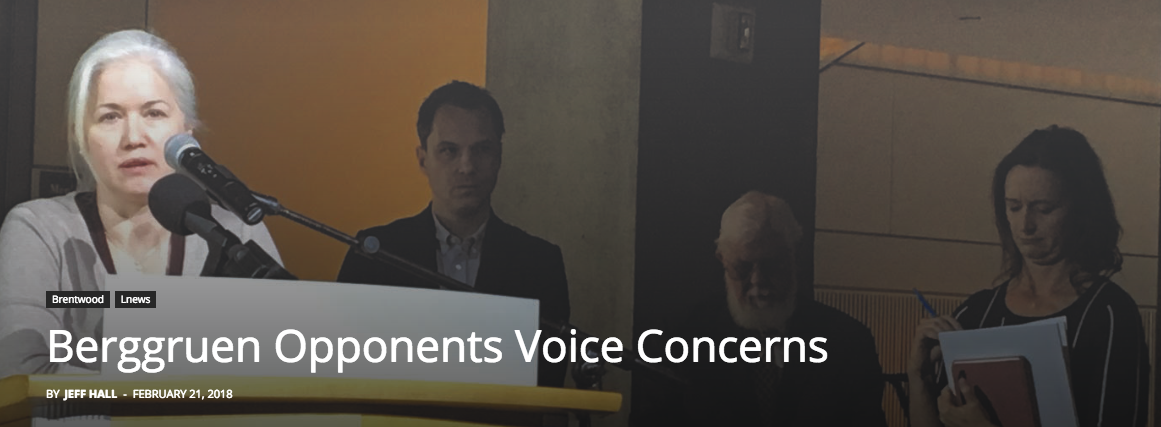
Article is as reported by Jeff Hall.

More than 400 people attended a public forum at the Skirball Center on Jan. 21 to learn about the Berggruen Institute’s (BI) plans to build a think tank in the hills above Brentwood, between Mt. St. Mary’s College and Mountaingate.
The 447-acre site sits atop old landfills that emit methane gas. Nicholas Berggruen wants to tap into this methane source and use that to help power the Institute.
Twelve years ago, the site was zoned to allow developers Castle & Cooke to build 28 mansions, but an agreement was also forged with local environmental groups to keep the hiking trails in the area open in perpetuity.
While the housing project was eventually abandoned, the right to build the 28 mansions still exists. However, Berggruen recently purchased the property and is hoping to receive variances that will allow him to build his Institute.
There has already been pushback in the community over the proposed Institute and BI Executive Vice President Dawn Nakagawa said she hoped attendees would keep an open mind. The primary mission of the Institute, she said, is to help society adapt to the challenges of the 21st Century. She added that BI scholars were working on important issues like climate change, reducing taxes for the middle class and improving governance.
Plans for the Institute reveal a place for a helipad, which several people objected to, especially when it came to the noise issue, but Nakagawa said the helipad was included at the request of the LA Fire Department, and the Institute has no plans to use helicopters.
Among those who voiced their concerns was John Binder, who feared a fire at the site could quickly sweep west into Bundy, Kenter and Mandeville Canyons.
Travis Longcore, an expert on the impact of architecture on wildlife, said the Institute would eliminate an important corridor that allows animals, including mountain lions, to cross back and forth beneath the 405. He also called the Institute’s planned use of big glass panels “a bird killer,” because birds would fly into the glass because they can’t see it.
Despite the fact that Nakagawi said hiking trails in the area would not be closed, three attorneys in attendance – Eric Edmunds, Tom Freeman and Mike Leslie – all said they feared the trails would be closed by BI or that additional security could detract from hikers’ experiences.
The new trails would be in a different location than the trails envisioned in the original plan, Nakagawi said, but BI’s plans would spare 300 trees that would have been buried in a landfill if the original Castle & Cooke plan was adhered to.
“It’s hard to believe that 12 years later, after settling all this, here we are again,” said Edmunds. “We fought before, and we will fight again.”
